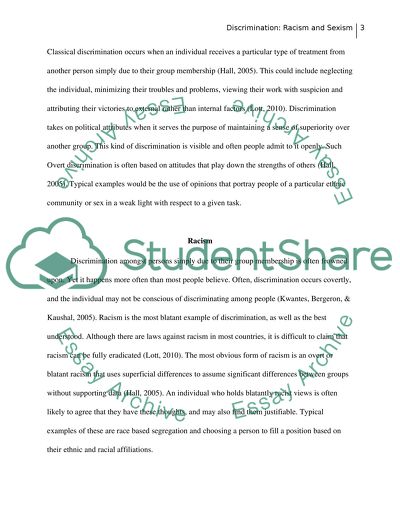Cite this document
(“Discrimination: Racism and Sexism Essay Example | Topics and Well Written Essays - 1750 words”, n.d.)
Retrieved from https://studentshare.org/sociology/1455511-discrimination-racism-and-sexism
Retrieved from https://studentshare.org/sociology/1455511-discrimination-racism-and-sexism
(Discrimination: Racism and Sexism Essay Example | Topics and Well Written Essays - 1750 Words)
https://studentshare.org/sociology/1455511-discrimination-racism-and-sexism.
https://studentshare.org/sociology/1455511-discrimination-racism-and-sexism.
“Discrimination: Racism and Sexism Essay Example | Topics and Well Written Essays - 1750 Words”, n.d. https://studentshare.org/sociology/1455511-discrimination-racism-and-sexism.


